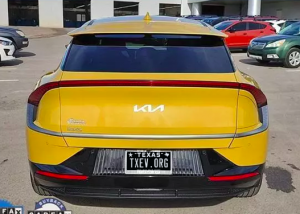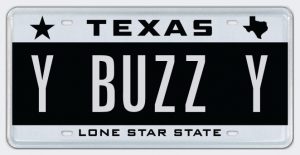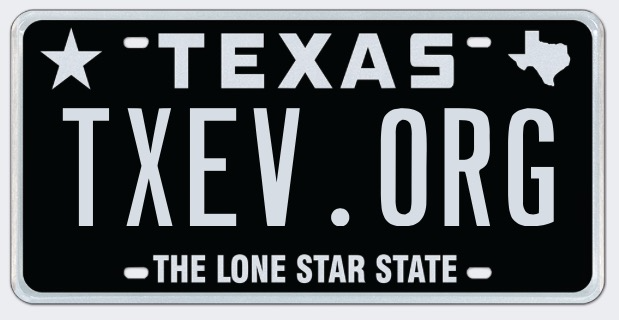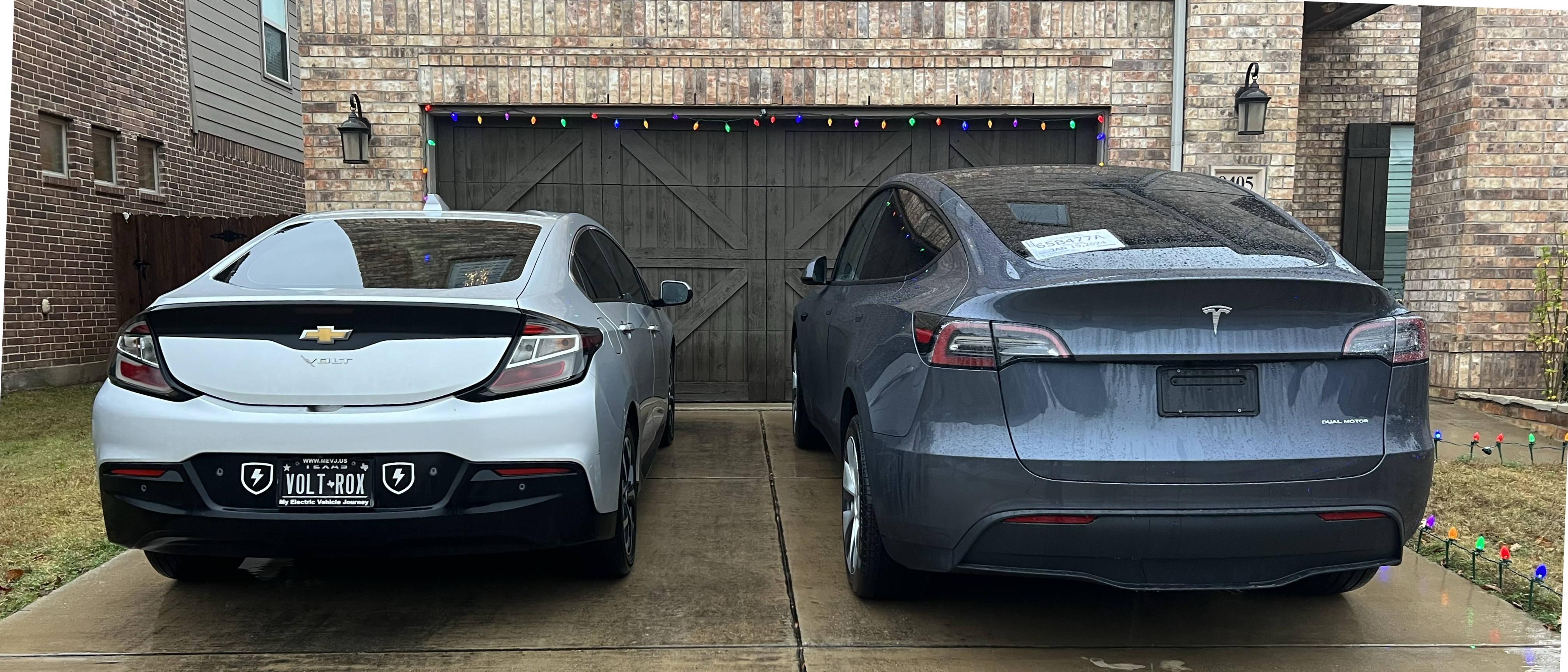Although I’ve been driving electrically for over 11 years, my personal vehicles have been plug-in hybrid electric vehicles, namely the Chevy Volt. Our immediate family has leased and/or owned 6 Volts (two 2012s, a 2014, 2015, 2017 and 2018). Until I retired from auto sales, we kept three Volts in our “fleet.” After retiring, my wife and I shared a Volt as I “worked” at home and her work was just 4 miles from home. Our 2018 was leased, so we let it go back to the leasing company, when the lease ended.
Today, I (finally!) made the move to a battery electric vehicle (BEV).
What took me so long? Timing. The Bolt EVs arrived at my dealership in late June of 2017, about 18 months after I had to either buy out the lease on a Volt we had or wait to lease a 2nd generation model 2017 Volt, which had arrived in March of 2016. I opted for the 2nd gen Volt, which set up a vehicle replacement schedule that kept me in a PHEV. Due to my appointment as Interim Executive Director for TxETRA, we needed to go back to having two vehicles between us.
Having taken a Bolt EV camping in a rural area of the Texas Hill Country and then driving from DFW to Austin to Houston and back to DFW (637 miles) in one day, I knew a BEV would easily fit in my life. In 2021, at the Electrify Expo, I saw the Kia EV6 for the first time. I thought it beautiful and technically amazing, capable of getting an 80% charge in as little as 18 minutes. It was on my short list for my first BEV.
I saw the EV6’s sister vehicle, the Hyundai Ioniq 5, for the first time, as I was driving to Austin to attend SXSW 2022. The Ioniq’s driver and I gave each other a ‘thumbs up.’ It got added to my short list, since it was basically the same vehicle as the EV6.

Other than having to go to Austin for TxETRA, we had no urgency regarding a new vehicle, so we coasted along with one car while I dreamed. I started looking at the new and preowned market for these vehicles just to get an idea of cost. I found a low-mileage, very yellow Kia EV6 GT-Line model in Broken Arrow, Oklahoma, which is about a 4 hour drive from my home. In my search, I came across ads for brand new Ioniq 5s priced competitively with the preowned Kia EV6. The Hyundais were much closer to home, so we decided to check them out.
On a Saturday, we decided to buy a Hyundai IONIQ 5, based on dealer listings on Cars.com. The dealers’ websites showed a discount of $3,500 to $4,000 from the dealer and a $7,500 discount from the manufacturer. That would make up for the lack of federal income tax credit for the Ioniq 5s and allow us to buy before the $2,500 Texas Rebate program ended. The weather was very nice, so we decided to drive to a rural dealer, located about an hour from our home. The rural dealer had the specific color in which we were interested.
Once we reached the dealer and test drove the vehicle, I was ready to buy. My wife, as is usual for her, was interested but not ready to move forward. The salesperson and sales manager presented the price to us and it included about $2,000 items added on by the dealership, including window tint, dent and scratch coverage, door edge guards, cup holder liners, etc. The dent and scratch coverage had a term of one year and cost $895. We did not want any of the add-ons, but were told by the manager that it was the dealership’s policy that the items had to be included on all new cars. The manager also explained they couldn’t increase the discount to eliminate the cost of the add-ons, because the deal was already losing over $1,400 instead of generating a profit.
We decided to become “be-backs” in dealer lingo, as in “We’ll think about it and be back later.”
Driving home, we decided to stop at the dealer nearest to our home, which had the deeper dealer discount of $4,000. Once we arrived, we found an Ioniq 5 we liked, although not the color we really wanted, and took it for a spin. Then, it was on to the sales desk. The first thing I noticed on the proposal was the $4,000 discount had dwindled to $3,500. When I asked about it, I was told the larger amount included incentives for which we did not qualify (military or first responder incentives). I immediately had a flashback to my car selling days, when I had to compete against dealers that did this (mine did not).
Here’s how that ploy works: In order to attract customers to their lot, dealers would show a discount that included all available manufacturer incentives, knowing most customers would not be able to get the advertised price. It never ceased to amaze me when customers would continue to purchase a vehicle from someone who has misled them from their very first contact. Then I saw the second dealer’s add-ons. They totaled $3,119 for similar add-ons, but their dent and appearance protection had a longer, three-year term. The proposal also included an interest rate of 18%. I knew interest rates had gone up after COVID, but was taken aback by this. We were making a huge down payment, so I had expected a much better rate. Once again, we thanked them for their time and became “be-backs.”
The next morning, as I pondered the timing of our purchase, I started wondering about a Tesla Model Y. We wanted a vehicle we could take camping and sleep in, if necessary. That was one of the reasons we were looking at the Kias and Hyundais. They have a “Utility Mode” that turns off the dashboard displays, but allows you to run the stereo, A/C or heat while the car is turned off. With a battery range of over 250 miles, we could run those items for days without depleting out battery. The first vehicle we saw that had this was a Tesla and they called it “Camp Mode.”
It was Sunday, when almost all car dealers in Texas are closed, but just out of curiosity, I checked to see if Tesla Motors was open on Sunday, since they technically don’t sell cars and their facilities are not dealerships. They’re more like an Apple Store, where you can learn about products, experience them, ask questions but, unlike the Apple Store, they send you to the Internet to make the purchase. Tesla was open, so we took a Model Y on a 45 minute test drive. We were given an estimate of the finance rate, which was almost 50% less than the rate at the second dealer offered, but once we applied for the financing, the actual rate was even lower! We also checked the cost of insurance coverage from Tesla’s insurance company as well as our current insurer, State Farm. I didn’t expect it to be the case, but State Farm had a slightly lower price on insurance and they wouldn’t monitor my driving like Tesla Insurance does, so we went with State Farm. The Tesla representative had me download the Tesla app and said the rest of the deal would be handled through the app.
We went home and discussed the Tesla Model Y as a potential next vehicle but there were two issues: 1) The model Y qualifies for the income tax credit, but Tesla had announced that it could be reduced or eliminated completely, when the new battery sourcing rules took effect on January 1st. We had wanted to take the credit as a point-of-sale discount, which could only happen if we purchased in 2024 or later. Since the Model Y would potentially not qualify for the $7,500 next year, we knew a Model Y would only work for us if we bought it this year. Fortunately, Texas’ $2,500 rebate still had a few available rebates (they’re limited to 2,000 rebates total), so we could potentially get $10K off the Tesla if we moved quickly. This was the very first time Tesla’s qualified for the rebate. In previous iterations, the rebate required that the vehicle purchase be from a registered, Texas dealership. We used the app to start the process and once we were informed of the finance rate, we were in. On the following Tuesday, I checked on the Texas Rebate and discovered there were only 100 rebates left. This round of rebates had only become available in late October but was retroactive to the start of the state’s fiscal year, September 1st. The rebates had never gone that quickly before. Oddly, neither of the Hyundai dealerships even knew Texas had a rebate program for EVs and PHEVs. We checked with Tesla and the earliest pick-up they could schedule was Thursday.

I had some friends on Facebook and LinkedIn who asked how I could buy a car from Elon Musk, due to his X/Twitter antics. I’ll admit, that consideration had given me pause. I personally don’t think we should hand a megaphone to those who’ve been convicted of lying or indicted for lying in an attempt to undermine our democracy. That’s not a freedom of speech issue, as that right in the Constitution has to do with the government limiting free speech, not companies. In fact the government does have penalties for inappropriate speech. Just try yelling “FIRE!” in a theater or on board an airliner or mentioning a bomb while at the airport. Yes, I don’t just believe that Biden won the election or that children were murdered at Sandy Hook Elementary. I know it. That being said, I also realized that the richest man on the planet is not going to have his conduct moderated by the profit on my Tesla sale and that Tesla, like it or not, is going to continue to be an important player in the country’s move to electric transport. For a while, I thought about a license plate that showed my and my friends angst about this purchase.
There was one negative about the Tesla purchase. When you pick up your vehicle, you are not handed a thick envelop full of the buyer’s agreement, application for registration, financing contract, etc. Those items are required to get the $2,500 Texas rebate. Tesla sends the paperwork to California, where it is signed by the company, and then to the customer. Since there were only 100 rebates left on Tuesday and we picked up our Model Y on Thursday, that delay probably cost us the bonus. Even without the rebate though, the Model Y was slightly lower in price compared to either of the deals we were offered on the Hyundais. This was a complete surprise to me. I considered Tesla to be a higher priced product, except for the entry-level Model 3. The Model Y was surprisingly competitive. Now, we have a PHEV and a BEV.
P.S. Just before we left the house to go get our Model Y, one of the Hyundai dealers’ managers called to say he had been given permission, by his General Manager, to reduce the price of the Ioniq 5 by $2,000 effectively eliminating the cost of the add-ons as I had requested. I explained that we were leaving to pick up our new Model Y because, even with his latest price, the Tesla was less expensive and a better fit for our needs. I also mentioned that the misleading pricing online was a problem for me and that his best opportunity to sell a car to me was when I was sitting in his dealership.
Also, I have ordered my new vanity plates:



